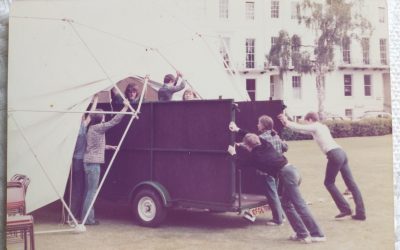The choice of music on this series of Strictly Come Dancing is a great disappointment. What an opportunity they have to range over the world’s fantastic dance music, and what a shame they don’t take it! I find it particularly annoying when the on-stage band is so good. I’d love to hear them in a far bigger repertoire than they get to play.
Time after time we see dances such as the Viennese Waltz, American Smooth, Foxtrot, Samba and Jive, all welded to recent pop music which is sometimes barely representative of the rhythm required. So unimaginative and similar are the musical choices that it leaves one with no distinct feeling of what makes, say, a quickstep different from a foxtrot, or a samba different from a rumba. Worst of all are the Latin American dances, particularly the Tango. South America has produced such tremendous music for the tango, so striking and evocative, but we never get to hear it. Where is the music of Astor Piazzolla?
You can see the dancers’ feet moving to a rhythmic pattern they’ve memorised in the practise studio, but it doesn’t always fit with the music we hear. Just because a piece of music is in, say, three-time, doesn’t necessarily mean it is the right choice for a waltz. Often we hear music which may have the ‘correct’ time-signature but entirely the wrong mood, and is completely lacking in the kind of lilt which would let dancers ‘breathe’.
When there is such a wealth of beautiful Viennese dance music, what is the point of ignoring it? And when there is such charming, sophisticated music from the 1930’s and 40’s, why force dancers to squeeze a quickstep into a suit that’s too tight for it? Using appropriate music from the right era could kindle a whole new interest in the history of dance music.




0 Comments